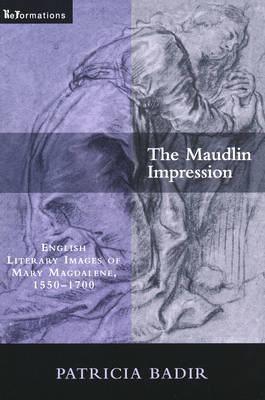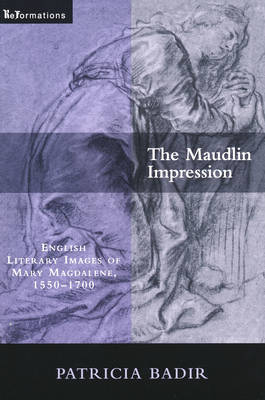
- Afhalen na 1 uur in een winkel met voorraad
- Gratis thuislevering in België vanaf € 30
- Ruim aanbod met 7 miljoen producten
- Afhalen na 1 uur in een winkel met voorraad
- Gratis thuislevering in België vanaf € 30
- Ruim aanbod met 7 miljoen producten
Omschrijving
Patricia Badir's The Maudlin Impression investigates the figure of Mary Magdalene in post-medieval English religious writings and visual representations. Badir argues that the medieval Magdalene story was not discarded as part of Reformation iconoclasm, but was enthusiastically embraced by English writers and artists and retold in a wide array of genres. This rich study bridges the historical division between medieval and early modern culture by showing the ways in which Protestant writers, as well as Catholics, used the medieval stories, art, and symbolism related to the biblical Magdalene as resources for thinking about the role of the affective and erotic in Christian devotion. Their literary and artistic glosses protected a range of religious devotional practices and lent embodied, tangible form to the God of the Reformation. They employed the Magdalene figure to articulate religious experience by means of a poetics that could avoid controversial questions of religious art while exploring the potency and appeal of the beautiful.
The Maudlin Impression is a literary history of imitation and invention. It participates in the "religious turn" in early modern studies by demonstrating the resilience of a single topos across time and across changing Christian beliefs.
Specificaties
Betrokkenen
- Auteur(s):
- Uitgeverij:
Inhoud
- Aantal bladzijden:
- 320
- Taal:
- Engels
- Reeks:
Eigenschappen
- Productcode (EAN):
- 9780268022150
- Verschijningsdatum:
- 15/10/2009
- Uitvoering:
- Paperback
- Formaat:
- Trade paperback (VS)
- Afmetingen:
- 152 mm x 226 mm
- Gewicht:
- 476 g

Alleen bij Standaard Boekhandel
Beoordelingen
We publiceren alleen reviews die voldoen aan de voorwaarden voor reviews. Bekijk onze voorwaarden voor reviews.











